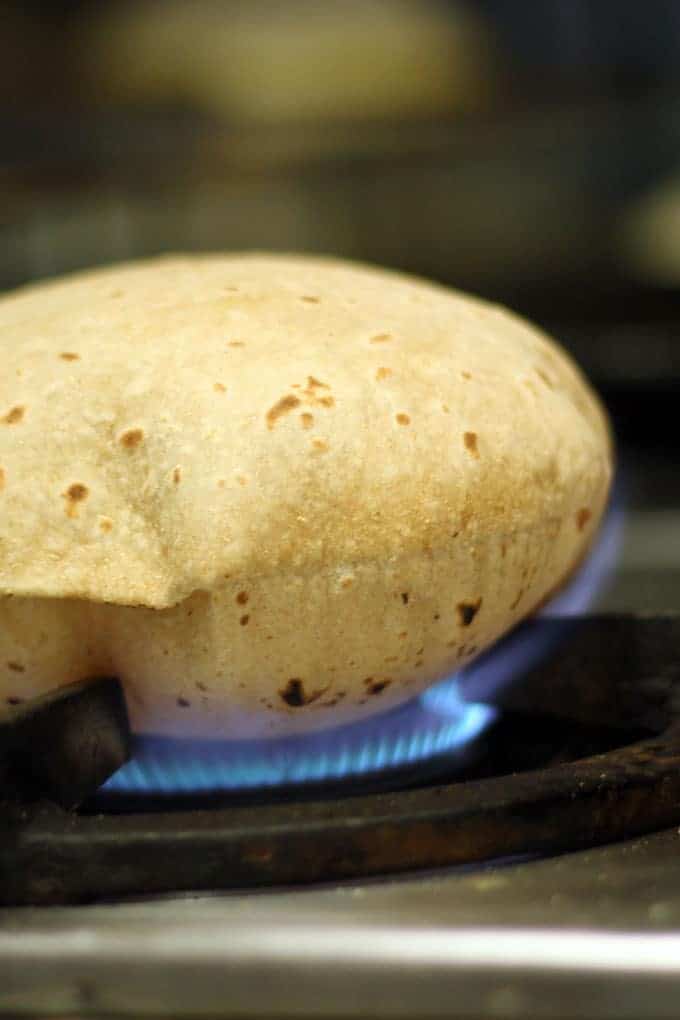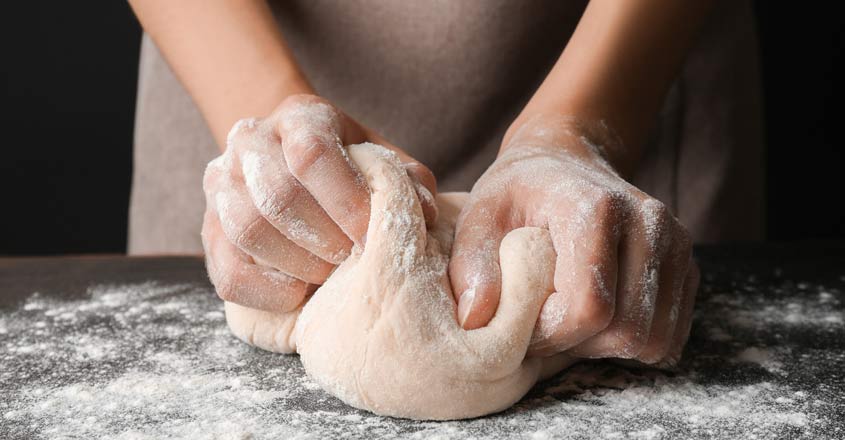Some tips to make Chapathis and rotis super soft

Chapathi has become an unavoidable item on Keralites’ dining tables. Most people here have mastered the art of making the perfect chapathi dough. Here are some amazing tips to make super soft chapathis and rotis.
You could poke the dough using your fingers to check whether it has the right consistency. The dough would sink and not resist if it has a soft texture.
The dough should be mixed well for at least ten minutes using your palms. Mixer too could be used.

The dough should be covered using a soft wet cloth for at least 20 minutes to retain the moisture.
All the sides should have the same thickness while rolling.
Dust off excess flour before cooking the chapathi.
Pre heat the pan in which chapathi is cooked; it should be cooked on medium flame.
Rub some ghee or olive oil on top of the cooked chapathis to retain its softness.
Add some more flour and mix well if the dough is too loose.
Meanwhile, add 1 tbsp water and mix again if the dough is too tight.
Constant practice is the only secret to make perfectly round chapathis. You could also cut the rolled dough using a round lid with sharp edges.
Ingredients
- 500 grams chapatti flour
- Enough water to make dough (enough to make a soft, pliable dough)
- Optional: Ghee, for smearing the surface of each chapatti
Instructions
Making dough: Save 2-3 tablespoons of dry flour or use extra, for dusting while rolling out chapatties.
Place rest of the flour in a bowl and add enough water, a little at a time as you mix it in, to make a soft dough. If you are new at making chapatties, it is better to have a little firmer dough, which is easier to control while rolling out. Experienced Indian cooks prefer a softer dough which makes softer chapatties.
Knead for a couple for minutes, sprinkle some water on top, cover and leave to stand for 10-20 minutes or so. Knead a little again. Now you should have a smooth, soft dough.
This process can be done quickly in a food processor with a dough attachment.
Rolling out: Break dough into 10-15 portions, depending on the size and thickness of chapatties you prefer. Make each portion into a ball by rolling between your palms. I make one ball at a time as I go along, because I am quite quick now, after years of making them!
Heat a griddle or tava.
Dip/dust one ball into the dry flour, covering all sides, and roll out into a pancake shape with a rolling pin. You will need to roll it in dry flour on both sides a couple of time during this process. It should be rolled from centre out, with a flicking movement of the wrists, so that the edges are thinner than the centre. This helps them to blow up during cooking. Size is a personal choice, I make them around 16-18 cm. diameter.
Cooking: Place the chapatti on a hot griddle or tava.
Turn it over when it becomes slightly darker in colour.
Cook the other side the same way. When it has a few brown blisters on the under surface, it is ready to cook on flame/under a grill.
To cook on a flame, pick the chapatti with tongs, flip over and place directly on a medium flame, it will balloon up. Move it around continuously, flipping over frequently on both sides, coaxing it to balloon up by pressing close any places where steam is escaping. It should be cooked evenly all over. The steam trapped inside helps the chapatti to balloon up as it expands and cook it from inside.
Cooking under a grill: For beginners, it may be easier to cook chapatties under a hot grill. After step 10, place the chapatti under a pre-heated grill, with non-blistered side up. Turn it over when it balloons up or gets a few brown blisters. Cook the other side. You have to be very watchful when cooking under a grill, because surface can burn very quickly as it comes closer to heat source when ballooning up. If another person can do it for you, it may help.
Cooking on a tava/pan alone : If you do not have a gas cooker or a grill, the Chapatties can also be cooked entirely on a tava. 1. Place the chapatti on a hot griddle or tava. 2. Turn it over when it becomes slightly darker in colour. 3. Turn over once more. Press gently all over, using a kitchen towel, coaxing it to balloon up from the edges in, until the whole chapatti swells up into a ball. Continue to press it all over, turning over on the other side too, until all areas are cooked. Alternatively, you can buy a wire rack as shown in the picture and place it on top of an electric hob after the stage 3. Proceed as you would on gas, turning it over and cooking all over on both sides.
Cooking on electric hob Find yourself a wire rack as in last picture. Place it on a heated hob. Balloon chapatties over it just like cooking on gas. These racks are often sold as an extra shelf for microwave ovens.
To Store: If not eaten straight away, you can store them in an insulated Chapati box/dabba, as shown in picture. Cover with a kitchen towel to absorb the moisture released as they cool. Alternatively, you can make a pile and wrap them in double thickness of aluminium foil, to be reheated later. Foil wrapped chapatties can be reheated by leaving them in a Hostess Trolley.
To Freeze:
1. Cook and cool them completely spread out on a towel. Make stacks of the number you usually need and place them in a plastic sandwich bag. Label and freeze.
2. half cook them upto griddle/tava stage, cool them and then freeze in bags. They can be finished off under a grill or as described in making chapatties.
Notes
Variations: You can add various saag or leaf vegetables to the chapatti dough, like spinach (palak) or fenugreek leaves (methi), lambs-quarter(bathua), radish leaves (mooli) etc. Any leftover dals and vegetable bhajies can also be mashed and added to the dough (reduce water accordingly).
I am often asked about how to keep chapatties soft. Try these things:
Leave the dough for approximately 10-15 minutes to ‘prove’, before you roll chapatties out. If you make dough immediately before making the chapatties, they tend to be stiffer.
If the dough is too firm, chapattis will get tough. Correct dough should be soft to touch and ‘give’ easily, when pressed with a finger. The more experienced you become, softer dough you can handle and make softer chapatties.
When rolling out, roll from outside in, using a rotating action of the wrist. Chapatties should be very slightly thicker in the middle than on the periphery. This makes them balloon up better, which in turn keeps them soft.
The griddle pan or ‘tava’ should be heavy bottomed and quite hot but not burning hot, before you place your chapatti on it. Cold tava will make stiff chapatties.
When you cook chapatties, put them in a pile, one on top of other, immediately each one is cooked. Once finished, wrap the whole pile in an aluminium foil and then in a cloth towel. Some of my friends spread them out to cool. In my view, this hardens them.
I use tap water to make dough. In winters, when tap water is very cold, lukewarm water might help.
If you don’t mind fat in your chapatties, smear a thin layer of ghee on each chapatti after it is cooked and before it is put on the pile. This also keeps them soft.
People in some regions of India routinely add a little oil/ghee to the dough. This is very optional. As a North Indian, I NEVER add oil to the dough. Softness of a chapatti has nothing to do with the oil in the dough in my view.



